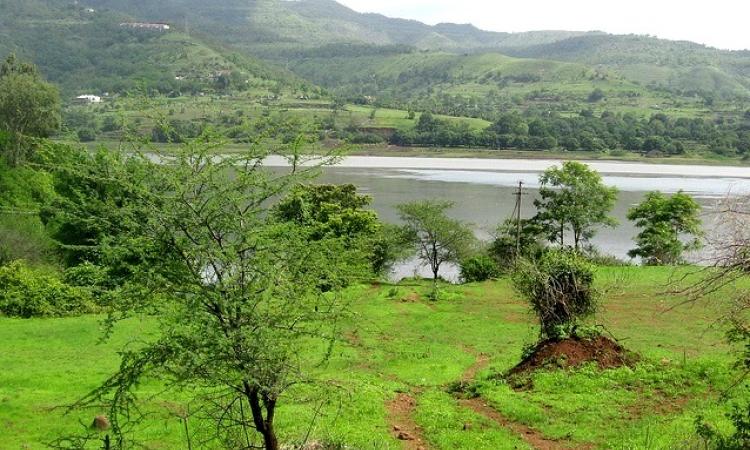
Government supported watershed development projects in India underwent a paradigm shift in 1994 with the advent of guidelines for the Watershed Development Programme as well as a number of pathbreaking guidelines that introduced innovative protocols that placed a strong emphasis on community participation. Development funds were directly transferred to the bank accounts of local committees for the first time and focus was placed on participatory and comprehensive action plans, partnerships between voluntary organisations and state governments, and special budgetary provisions for training and community organisations.
The paper titled 'A reflection on policy formulation processes - A case study of watershed management projects in Andhra Pradesh', informs that there were many challenges in making these guidelines a reality with the role of the central government largely being limited to setting the vision and objectives, defining the strategy, providing financial resources and guidance, and the state governments expected to follow these guidelines, place effective implementation mechanisms and ensure that the expected end results were achieved.
The paper describes the impact of these changes on the implementation of watershed development projects in Andhra Pradesh and the lessons learnt in the process. It presents the reflections of two individuals who went through the process of contextualising national policies for local conditions and witnessed the 'ups and downs' of this process.
Phases in the evolution of the watershed development projects in Andhra Pradesh
- In the initial phase (1994 to 2000), watershed development projects enjoyed high priority in Andhra Pradesh.The state government was able to mobilise a large number of watershed development projects from the Centre. Andhra Pradesh also promoted other important community based development initiatives, which were considered to be necessary conditions for accelerated growth. This triggered a new way of functioning and policy framework for these initiatives.
- The second phase (2001–2005) witnessed series of changes in the policies of watershed development project in the country and state. This was strongly linked to the changes in leadership in the government and administrative setup of watershed development projects.
- In the third phase (2006 – 2009), watershed development projects faced considerable neglect from policy makers at the level of the central and state governments.
- From the fourth phase (2010 onwards), priority was given to the Mahatma Gandhi National Rural Employment Guarantee Scheme and watershed projects were prioritised lower.
- From the fifth phase (2014 onwards), new governments at the central and state level, and the bifurcation of Andhra Pradesh into Andhra Pradesh and Telangana have defined a new context. The Planning Commission has been abolished and NITI Ayog established. The 14th Finance Commission has recommended a new set of relationships between the state and central governments. Several centrally sponsored schemes and flagship programs are being pushed out, as the central support is reduced from 90% to 50%. Watershed development projects (IWMP) fall in this category. It appears that there will be a slow death of the existing watershed approach; a need for reinventing watershed approaches is in order.
Why did these changes take place?
- Vision of individuals, out of box thinking in Andhra Pradesh
- Active and committed civil society organisations and networks in addition to the visionary bureaucracy
- Government of Andhra Pradesh developed strategic partnership with reputed agencies such as ICRISAT, MANAGE and other academic institutions. These partnerships also extended to bilateral projects such as Andhra Pradesh Rural Livelihoods Projects, Andhra Pradesh Drought Adaptation Initiatives, and so on. These triggered new thought processes and actions within mainstream projects.
- The governments in the state/ country changed several times in the last 20 years, which had implications on the policy and practice of watershed management. For e.g., watershed development projects received high attention during the initial phase (mid 90s to early 2000), as the state government considered them as an important intervention for rural development. This priority changed over a period (mid 2000) to MGNREGS and watershed projects received (relatively) low priority.
Lessons learned on policy formulation processes
The paper argues that some key statements from the State Strategic Plan of Andhra Pradesh clearly indicate that the agenda of watershed management projects is long term and is not over. However, future watershed development projects in Andhra Pradesh and Telangana have to find themselves in the midst of changing global equations, changing technology, climate change related issues, deteriorating soil fertility, diminishing forest covers, depleting groundwater and demographic changes such as increasing urbanisation, increasing disparity between rich and poor, conflicting agriculture and land use policies etc.
Based on the achievements thus far, the future course of action needs to be defined. In this context, the lessons learned from the past on “policy formulation processes” include:
- Cultivating partnerships
- Strong support for innovations, experimentation and action research
- Independent and external feedback
- Orientation to cadres
The policy formulation processes in Andhra Pradesh in the context of watershed development projects have been largely guided by principles of partnership and collaboration among several like minded partners including government officials, civil society organisations, people’s representatives/ governments and other agencies/ individuals. The processes that contributed to this were owned and nurtured by several actors.
The paper ends by arguing that these efforts need to be continued in the interest of society. Though all these initiatives are not systematically institutionalised, there is a loose cohesion in this process. These efforts can have the potential to produce meaningful results under new and relevant policy and practices in the context of watershed management projects in the country.
Please download a copy of the paper below.